A review by Nadia Dawson
Eric Jackson began his presentation by reminding us of how the discovery of this tomb was made by Howard Carter back in 1922. He gave a brief history of Carter’s career and of his connection with Lord Carnarvon who, like Carter was also fascinated by Egyptology so hired Carter and funded the costs of the excavation.
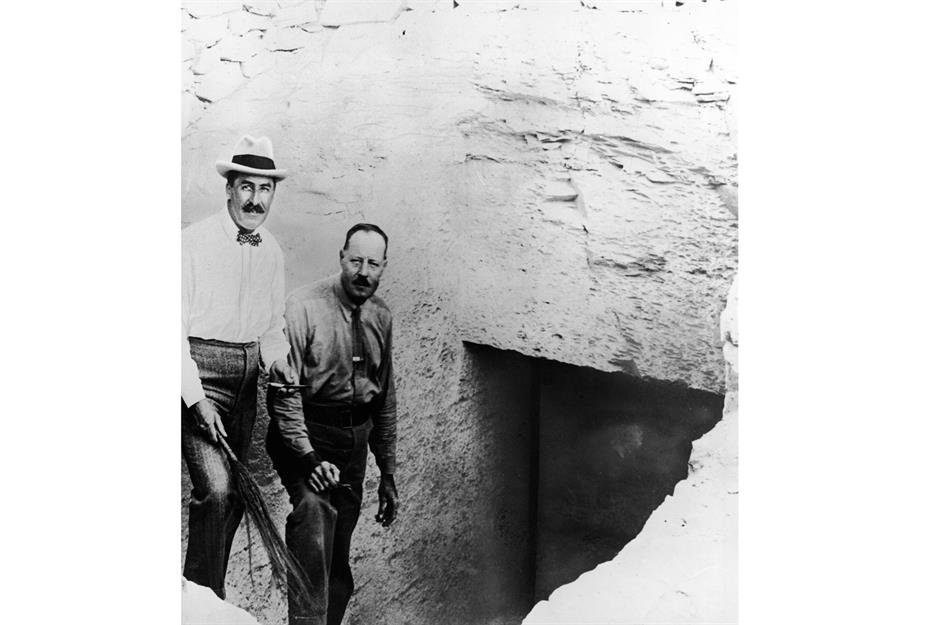
World War 1 interrupted the excavations however, in November 1922, on resuming his excavations, Carter found the first sign of what eventually proved to be Tut-Ankh-Amun’s tomb. The shifting desert ‘sands’ had hidden the tomb for more than 3,000 years but on November 4th, Carter’s team discovered the first step of a staircase. The following day, the whole staircase had been exposed and on November 26th 1922, a second sealed doorway was discovered. As Carter made a tiny breach in the door with his chisel, his breath was taken away when he saw a room filled with a ‘jumble’ of gold treasures. In here the tomb was showing evidence of having been entered and casually plundered but, because of its apparent close proximity to the nearby tomb of Ramses VI, its location had been preserved and thankfully clearly forgotten.
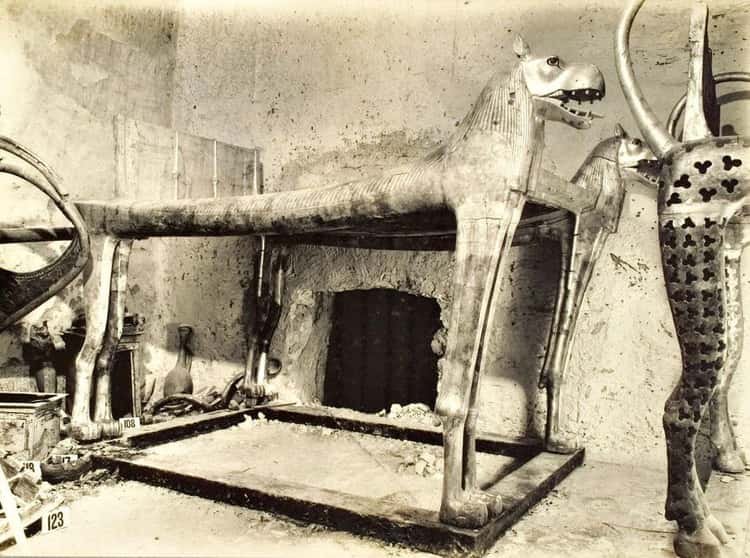
It wasn’t until February 16th 1923 that Carter and Carnarvon opened the innermost chamber of the tomb and found the sarcophagus of King Tut-Ankh-Amun. The king had been mummified according to Egyptian religious tradition, his organs removed and he had been laid within a nest of containers which comprised of three golden coffins, a granite sarcophagus and four gilded wooden shrines. Encasing his head was a magnificent golden mask (more like a helmet) and, when this was removed, he was found to be wearing a beautiful gold diadem and his body was covered in precious items including earrings, brooches, amulets and other valuable ornaments including a gold dagger.
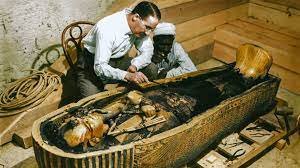
Because of the tomb’s small size, it was suggested that the king’s death at 19 must have been unexpected because when the treasury room was opened up, not only did it contain some of the king’s most valuable treasures but also his organs in canopic casks and, two sealed miniature coffins of his mummified children. The room was guarded by a life-sized shrine of the jackal-headed god Anubis and also contained some essential tools and several boats to carry him into the afterlife.
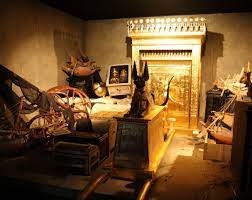
Carter spent nearly ten years supervising the removal of the tomb’s vast hoard of nearly 5,000 artefacts and treasure contents which included furniture, clothes, chariots and weapons. Although the contents of his tomb had fared well, sadly for Tut-Ankh-Amun, the fact that his body had remained in his tomb undisturbed for over 3,000 years meant that it had suffered from damp and mould which had caused some degradation. As a consequence, his mummy is now on display within the tomb in the Valley of the Kings but his layered coffins have been replaced by a climate-controlled glass box. The contents of his tomb and his glorious golden mask which were housed in the Egyptian Museum in Cairo for all those years has now been moved to the purpose built Grand Egyptian Museum in Giza which is expected to open in 2022.
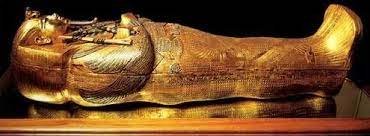
Although he was a pharaoh for ten years, Tut-Ankh-Amun was barely acknowledged by his successors and not even known to the modern world until 1922 however, once the excavations of his tomb had been completed in 1932, and its contents made public, an interest in ancient Egypt and Egyptology was sparked around the world and he has since become the world’s most famous pharaoh. Sadly, Lord Carnarvon died just four months after entering the tomb which led to the popularisation of the ‘curse of the Pharaohs’ theory however, Carter returned to London in 1932 where he gave lectures in Europe, the United States and elsewhere for many years. Very surprisingly, he was never ‘honoured’ for his discovery and all his work cataloguing the contents but, neither was he affected by the ’curse of the Pharaohs’ as he lived until he was 65.
Eric is obviously passionate and extremely knowledgeable about ancient Egypt and the intriguing boy-king Tut-Ankh-Amun, his tomb and treasures so, his illustrated powerpoint presentation provided us with a wealth of very interesting ‘insider’ information.

Leave a Reply
You must be logged in to post a comment.